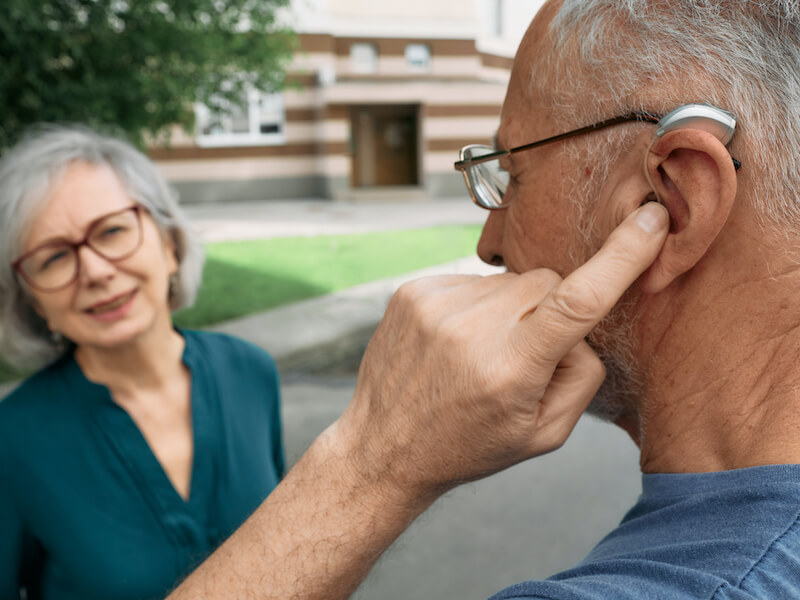
Have you ever been watching your favorite Netflix show when your internet abruptly cuts out? You sit there and watch that spinning circle instead of learning about who won that cooking competition. All you can do is wait around for it to come back. Maybe it’s your modem, could be your router, possibly it’s the internet company, or maybe it’ll just fix itself. It kind of stinks.
When technology breaks down, it can be very frustrating. Your hearing aids certainly fall into this category. The majority of the time, your hearing aids will provide you with the means to stay connected to loved ones, have conversations with co-workers, and keep up with your neighbors.
But when they quit working, your hearing loss symptoms can suddenly become much more frustrating. The technology you’re depending on has failed you. How do hearing aids just stop working? So how do you deal with that? Well, there are three common ways that hearing aids can malfunction, here’s how you can start to recognize and troubleshoot those problems.
Three common issues with hearing aids (and some possible solutions)
Hearing aids are sophisticated devices. Even still, there are some common problems that individuals with hearing aids might encounter. Let’s have a look at possible causes of these issues and potential fixes.
Feedback and whistling
So, perhaps you’re trying to have a chat with your family or watch your favorite show and you start to hear a horrific whistling sound. Or perhaps you hear some feedback. You begin to think, “this is strange, what’s up with this whistling”?
Here are three possible issues that could be causing this feedback and whistling:
- The tubing that attaches the hearing aid with the earmold, on behind-the-ear models, can occasionally become compromised. Have a close look to identify whether the tube may have separated or may be compromised in some way.
- Your hearing aids may not be seated in your ears correctly. Try to remove them and re-seat them. If the fit isn’t correct you might need to come see us so we can help you get a better fit.
- The functionality of your hearing aid can be affected by earwax buildup in your ear canal. This is a fairly common one. Whistling and feedback are often one outcome of this type of earwax buildup. If possible, you can try clearing some earwax out of your ear or talk to us about the best way to do that (do not use a cotton swab).
If these problems are not easily resolved, it’s worth speaking with us about correcting the fit or sending your device in for maintenance (depending on what we determine the underlying cause of that whistling or feedback might be).
Hearing aids not generating sound
The main objective of hearing aids is to generate sound. That’s their main function! Something has undoubtedly gone wrong if you can’t hear any sound coming out of your hearing aid. So what could be the cause when hearing aids work but no sound comes through? Here are some things to look for:
- Power: Look, we’ve all disregarded turning the hearing aids on before. Check for this first. This potential problem can then be eliminated..
- Earwax buildup: Yup, earwax strikes again. Examine your device for indications of earwax on the microphone or speakers or any sensitive parts. You want to be sure the device is good and clean.
- Your settings: Cycle through the personalized settings if your device includes them. It’s feasible your hearing devices are not on the right custom program (so maybe your hearing aids think you’re in a concert hall instead of at the kitchen table). The sound you’re hearing may be off as a result.
- Batteries: If you have rechargeable batteries, be sure that they’re fully charged. And whether your batteries are rechargeable or not, it might be worth swapping them out for new ones.
We’re here for you if these measures don’t clear your issues up. We’ll be able to help you identify the next steps, and whether maintenance, repair, or replacement is needed.
Painful ears when you’re wearing your hearing aids
Maybe your hearing aids are fine functionally but they hurt when you put them in. And you’re likely wondering why your hearing aids would make your ears hurt. You’re not as likely to use your hearing aids every day if they hurt your ears. So, what could be causing it?
- Fit: The fit of the device is the most evident issue. After all, the majority of hearing aids work best when the fit is nice and snug. So when your hearing aids aren’t fitting quite right, there can be some pain. Many hearing aids can be customized to your specific ears. Over the long run, you will have fewer problems if you have a tight fit. We will be able to help you get the best possible fit from your devices.
- Time: Getting used to your hearing aids will take a little while. How long it takes will depend on the person. When you first get your new hearing aids, we can help you get a realistic idea of the adjustment period you can expect. If uncomfortable ears continue, talk to us about that too!
Take your new hearing aid out for a test ride
Before you decide on a set of hearing aids, it’s a smart plan to try them out for a while. In the majority of cases we’ll let you try out a pair of devices before you decide that’s the set for you.
Selecting the right hearing aids, adjusting them to fit your requirements, and helping with any extended problems you may have, are all things we will help with. In other words, when your devices stop working, you’ll have a resource that can help!
And that’s probably more dependable than your internet company.

